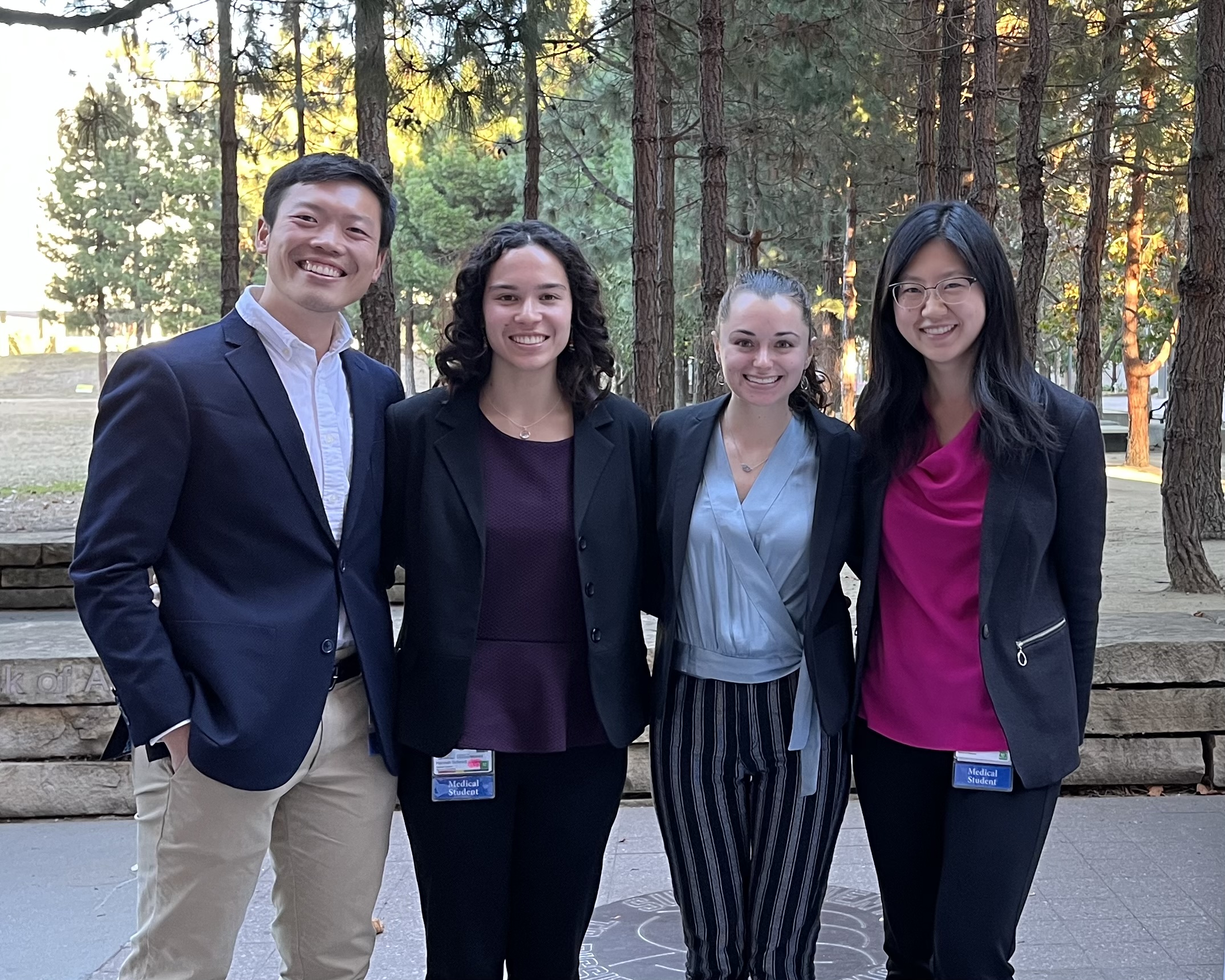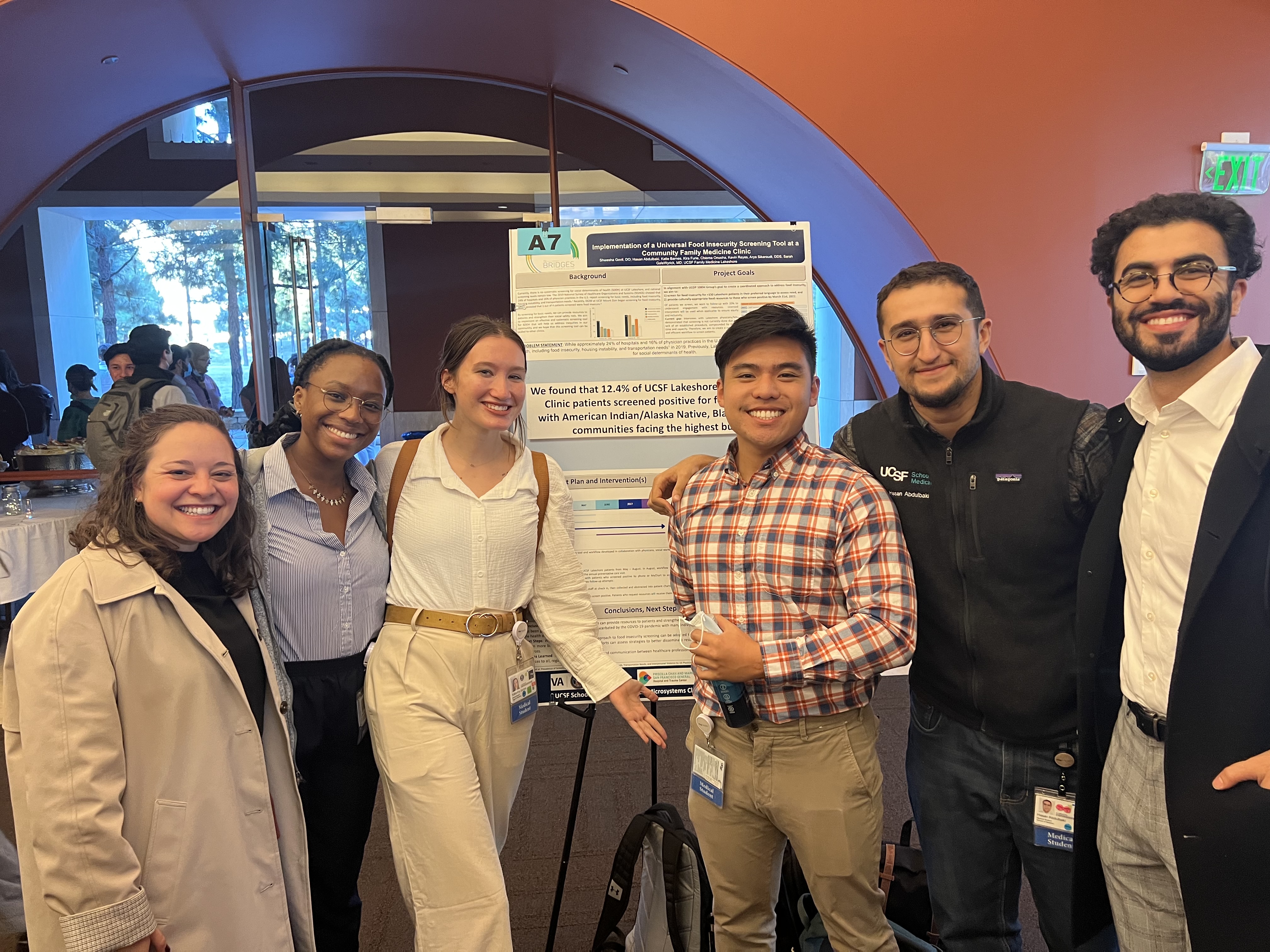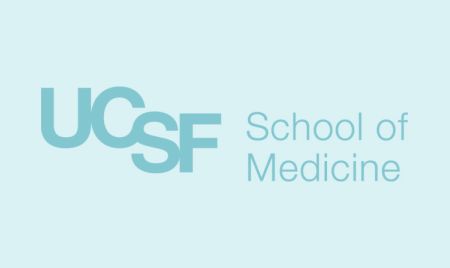Quality is Love: Highlights from the 6th Annual UCSF School of Medicine Health Systems Improvement Symposium
MS2 Alyssa Rivera, MS2 Amritpal Singh, and Sara Newmann, MD, MPH, in conversation with MS2 Bagieng Keophimphone, during the poster session at the UCSF School of Medicine Clinical Microsystems Clerkship Health Systems Improvement Symposium.
As the voices filling the Mission Bay Conference Center slowly simmered to a hush, UCSF School of Medicine Vice Dean for Education, Dr. Catherine Lucey, began her speech by saying, “Love is in the air here.” Although an unexpected opener to the sixth annual UCSF School of Medicine Clinical Microsystems Clerkship Health Systems Improvement Symposium, which celebrates UCSF medical students’ quality improvement work in their first year and a half of medical school, she went on to explain her unique theme. “Quality is love. You have to be able to love the patients who receive the care that we give, so that the next people have better care.”
As part of their Clinical Microsystems Clerkships (CMC), this past year, 164 UCSF medical students divided between 31 teams carried out projects to improve the quality of patient care across multiple UCSF Health sites and affiliates including Zuckerberg San Francisco General Hospital (ZSFG) and the San Francisco VA (SFVA) Medical Center.
While all of these projects had concrete aims within different UCSF microsystems, most projects focused on improvements in patient care in the domains of patient experience, quality, safety, health equity, reducing waste, and improving access to health care. Three projects were highlighted through oral presentations, sparking audience discussion and demonstrating the capacity for medical students to create substantial change in the medical system through their quality improvement work.
The first team, comprised of Brandon Chu, Woody Faugas, Victoria Lee, Ella Olgin, and Hannah Schmidt and led by Dr. Jessica Gosnell, Associate Professor of Surgery, focused on reducing waste production in the operating room (OR). While they approached this project through an environmental lens, they came to analyze it through a patient equity one as well. Results suggested that decreasing waste in the OR would also lead to decreased patient care costs. With an eye towards feasibility and sustainability, they noted that this environmentally and financially conscious model has already been adopted in Australia, where Dr. Gosnell used to practice.
Over at the SFVA, medical students Michelle Nguyen, Michelle Luu, Cindy Folefack, Gabriel Zamora, Cameron Nosrat, and Gurbinder Singh, led by Dr. Preeti Sukerkar, Assistant Professor of Radiology, and Dr. Erika Price, Professor of Medicine, focused on improving patient care in the Radiology department. Their project revealed the inconsistencies in patient histories reported in radiologic requisitions, which are vital to making accurate radiologic imaging assessments. Students noted that in the event of inaccurate readings, patients must return for another imaging session, recognizing the patient burden incurred by poor healthcare delivery. To address this, they created educational flyers with standardized expectations for patient histories, effectively increasing the rate of complete recorded histories by 40 percent.

Another project, “Achieving Appropriate and Equitable Length of Stay in PACU,” completed by students Noor Chahal, Mandeep Kaur, Bagieng Keophimphone, Alyssa Marie Rivera, Amritpal Singh, and Rafael Verduzco Guillen, led by Dr. Arthur Wood, Associate Professor of Anesthesia, resulted in decreased Post Anesthesia Care Unit (PACU) length of stay (LOS) from 165 minutes to 120 minutes. They reasoned that this not only decreased staff burnout and hospital resource waste, but also alleviated financial burden and contributed to patient safety. They accomplished this by implementing electronic pharmacy secure script training modules for residents, which in turn also increased e-script usage by 63 percent. Interestingly, they found that there were starting point differences in English and non-English speaking patients’ LOS, with non-English speaking patients having longer LOS, but that both groups had similarly decreased LOS after implementation of e-scripts.
On carrying out these projects, students reflected on how the experience helped develop their interprofessional teamwork skills. Hannah Schmidt, who was part of the team focusing on reducing OR waste, commented, “I feel like this introduced me to ‘interprofessionalism.’ It really gave me an idea of how many people are involved in just one thing and how many different hats people wear.”
Her fellow classmate, Harrison Tran, echoed similar thoughts. “I think it was good, as students, to have an introduction to that [interprofessional practice], because that’s something going into our first year, I didn’t realize was so important. Having an opportunity to be able to have a low barrier to talk to nurses and other staff and techs, was a really good opportunity to learn.”

While students made major differences in patient care this past year, they also helped build upon the current foundation for future projects. Medical student Kevin Reyes, whose team worked on initiating screening for food insecurity at the UCSF Family Medicine Center at Lakeshore, explained, “I am hopeful that CMC teams in future cohorts will be able to add onto our work and branch out to screen for the other social determinants of health as well so we can improve how we holistically care for our communities.” Echoing Vice Dean Lucey's thoughts, his project and that of many others have not only improved patient care for the next person, but will also bolster the quality improvement work inherent in the UCSF pre-clinical curriculum.
As the night drew to a close, Dr. Ralph Gonzales, Associate Dean for Clinical Innovation and Chief Innovation Officer for UCSF Health, energetically took the stage, reflecting the mood of the symposium. Addressing the students, he said, “You’re taking new approaches to solving [problems] and you’re engaging the surgeons and the people in the Gemba with making those changes.” The “Gemba” comes from the Japanese term meaning “the actual place,” and refers to students’ efforts to work directly with providers in microsystems to understand the source of medical errors and inefficiencies.
Expanding on the topic, he said, “I saw a lot of work in crowded emergency department and urgent care clinics where our patients are seeking care of last resort, in part because of this pandemic. You guys aren’t shying away from trying to get to the very top of the mountain, you want to keep shooting as high as you can.”









